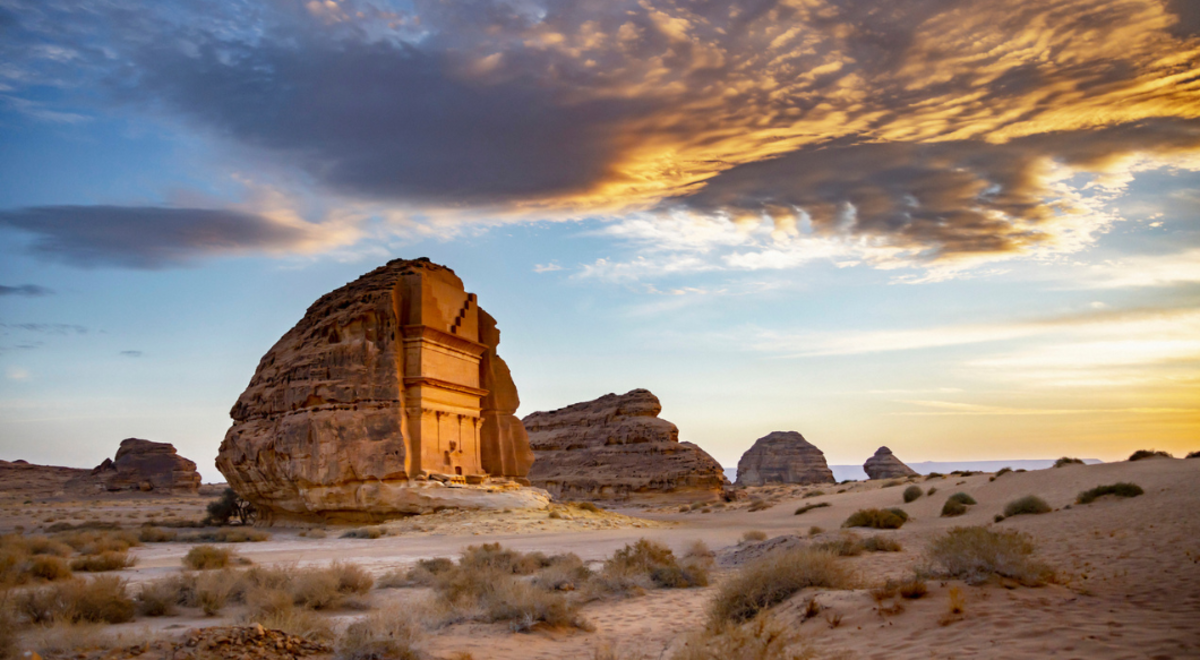UNESCO World Heritage Sites are places of outstanding universal value to humanity. They are selected for their cultural, historical, scientific, or natural significance. There are over 1,000 UNESCO World Heritage Sites in the world, but many of them are lesser-known.
There are many reasons why travellers should visit these lesser-known sites. First, they offer a unique and authentic travel experience. These sites are often less crowded than the more famous ones, which means that travellers can have a more personal and immersive experience. Second, lesser-known UNESCO World Heritage Sites are often more affordable than the more famous ones. This is because they are not as well-known, so there is less demand for tourism. Third, lesser-known UNESCO World Heritage Sites often offer a more diverse range of experiences. This is because they are located in different parts of the world and represent different cultures and civilizations.
Some of the most famous UNESCO World Heritage Sites include the Great Wall of China, the Taj Mahal, and Machu Picchu. However, there are many other lesser-known UNESCO World Heritage Sites that are just as amazing.
Here are a few examples not covered in detail below but worth looking into:
-
The Historic Centre of Bukhara, Uzbekistan: This ancient city is a UNESCO World Heritage Site for its well-preserved Islamic architecture.
-
The Rock-Hewn Churches of Lalibela, Ethiopia: These 11th-century churches are carved out of solid rock.
-
The Galapagos Islands, Ecuador: This archipelago is home to a unique and diverse range of wildlife.
If you are looking for a unique and authentic travel experience, then you should consider visiting a lesser-known UNESCO World Heritage Site. These sites offer a wealth of history, culture, and natural beauty. Our guide below lists some of our favourite United Nations educational artefacts and destinations to see off the beaten tourist path.
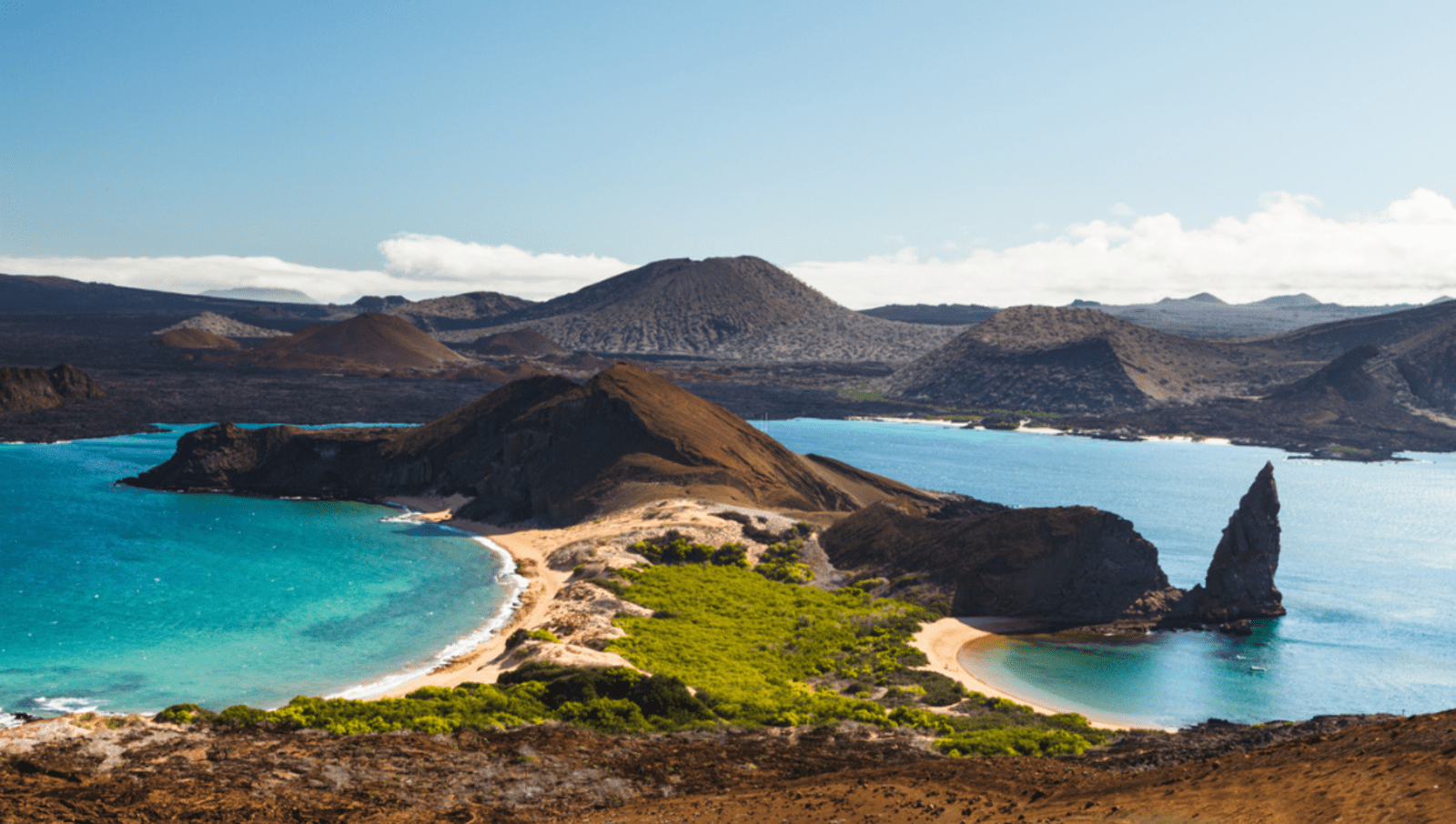


Gammelstad Church Town, Sweden
Gammelstad Church Town is a UNESCO World Heritage Site situated in Gammelstaden near the city of Luleå, Sweden, at the northern end of the Gulf of Bothnia. It is the best-preserved example of a type of town that was once widespread throughout northern Scandinavia.
The town is located about 10 kilometres upstream of the Lule River. At its centre is the 15th-century Nederluleå Church. Among the medieval stone church are over 400 petite red cottages erected by farmers to accommodate worshipers that travelled to attend church and parish gatherings from far away and who couldn't return home the same day because of the distance or travel conditions. There is a short walk tourists can enjoy around the beautiful church town to best admire the archeological site. Church Village of Gammelstad, Luleå was listed as a World Heritage Site in 1996.



Hegra Archaeological Site of Al-Hijr, Saudi Arabia
Saudi Arabia is an otherworldly destination far removed from the customs associated with Western culture with numerous archaeological and religious wonders. Currently, there are six UNESCO World Heritage Sites in Saudi Arabia with 'outstanding universal value'.
The Archaeological Site of Al-Hijr (Madâin Sâlih) is the first World Heritage property to be honoured with UNESCO status in Saudi Arabia. Formerly known as Hegra it is the largest conserved site of the civilisation of the Nabataeans south of Petra in Jordan. It features well-preserved monumental tombs with decorated facades dating from the 1st century BC to the 1st century AD.
With its 111 tombs, 94 of which are decorated, and water wells, the site is an outstanding example of the Nabataeans’ architectural accomplishment and hydraulic expertise. The site of Al-Hijr is located at a meeting point between various civilisations of late Antiquity, on a trade route between the Arabian Peninsula, the Mediterranean world and Asia.
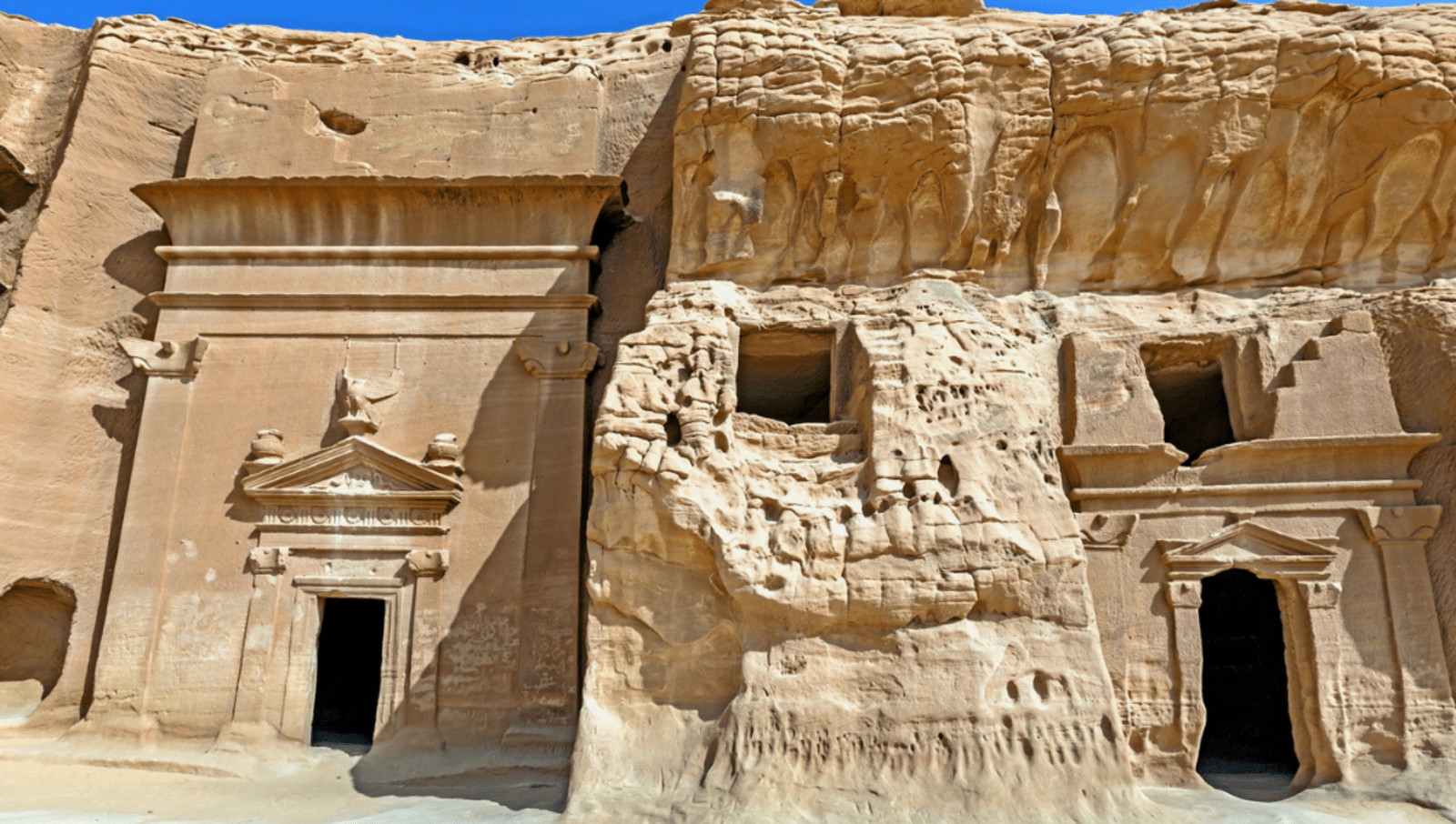


Antequera Dolmens Site, Spain
This UNESCO World Heritage Site located in the heart of Andalusia, southern Spain is just 45 minutes drive north of the capital Málaga. It comprises three megalithic monuments: the Menga and Viera dolmens and the Tholos of El Romeral, and two natural monuments: La Peña de los Enamorados and El Torcal mountainous formations.
The Dolmens are some of the most remarkable architectural works of European prehistory. They were built during the Neolithic and Bronze Ages out of large stone blocks, and they form chambers with lintelled roofs or false cupolas. The dolmens were used as tombs, and they offer a fascinating glimpse into the lives and beliefs of early European peoples.
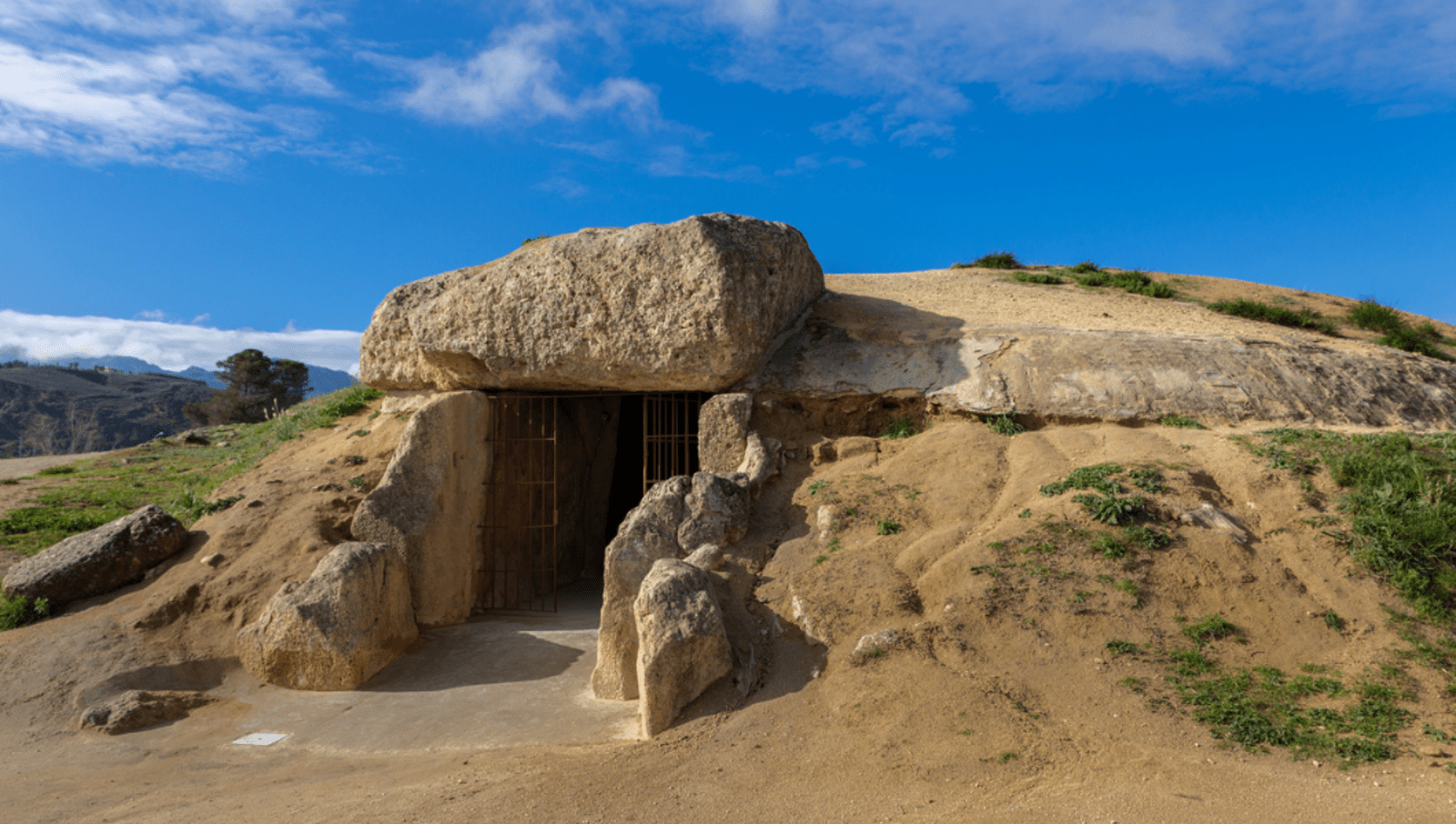


Here are some of the things you can do there:
-
Visit the three dolmens: The Menga Dolmen is the largest in the Iberian Peninsula, and it is a truly impressive sight. The Viera Dolmen is smaller than the Menga Dolmen, but it is still an impressive structure. The Tholos of El Romeral is a tholos, which is a type of dolmen with a false cupola roof.
-
Explore the natural monuments: La Peña de los Enamorados is a dramatic rock formation that resembles a human face. El Torcal is a karstic landscape of limestone pillars and rocks.
-
Visit the Antequera Museum: See a collection of artefacts as well as other archaeological finds from the region.
-
Take a guided tour: There are many guided tours available to help you learn more about the site and its history.
If you are interested in history, archaeology, or simply beautiful scenery, Antequera Dolmens is a must-visit destination. It is a fascinating journey through time, and it offers a unique opportunity to experience the natural wonders of European megalithism.
Mammoth Cave National Park, Kentucky, United States
Mammoth Cave is a UNESCO World Heritage Site located in Kentucky, United States. It is one of the world's longest cave systems, with over 400 miles of explored passages. The cave was formed from the dissolution of limestone by water, and it is home to a vast variety of unique geological formations, including stalactites, stalagmites, and underground lakes.
Mammoth Cave is a popular tourist destination but remains a lesser-known UNESCO site, and is open all year round. However, the summer is the most popular time to visit, as the cave is cooler during the hot summer months.
There are a variety of ways to explore Mammoth Cave. Visitors can take guided tours, which range from easy walks to more strenuous hikes. There are also opportunities for spelunking (cave exploration), for experienced cavers.
Mammoth Cave is a fascinating place to visit, and it is a great way to experience the beauty of nature. It is also a great place to learn about geology and cave formation. If you are looking for a unique and unforgettable travel experience, then Mammoth Cave is a great option.
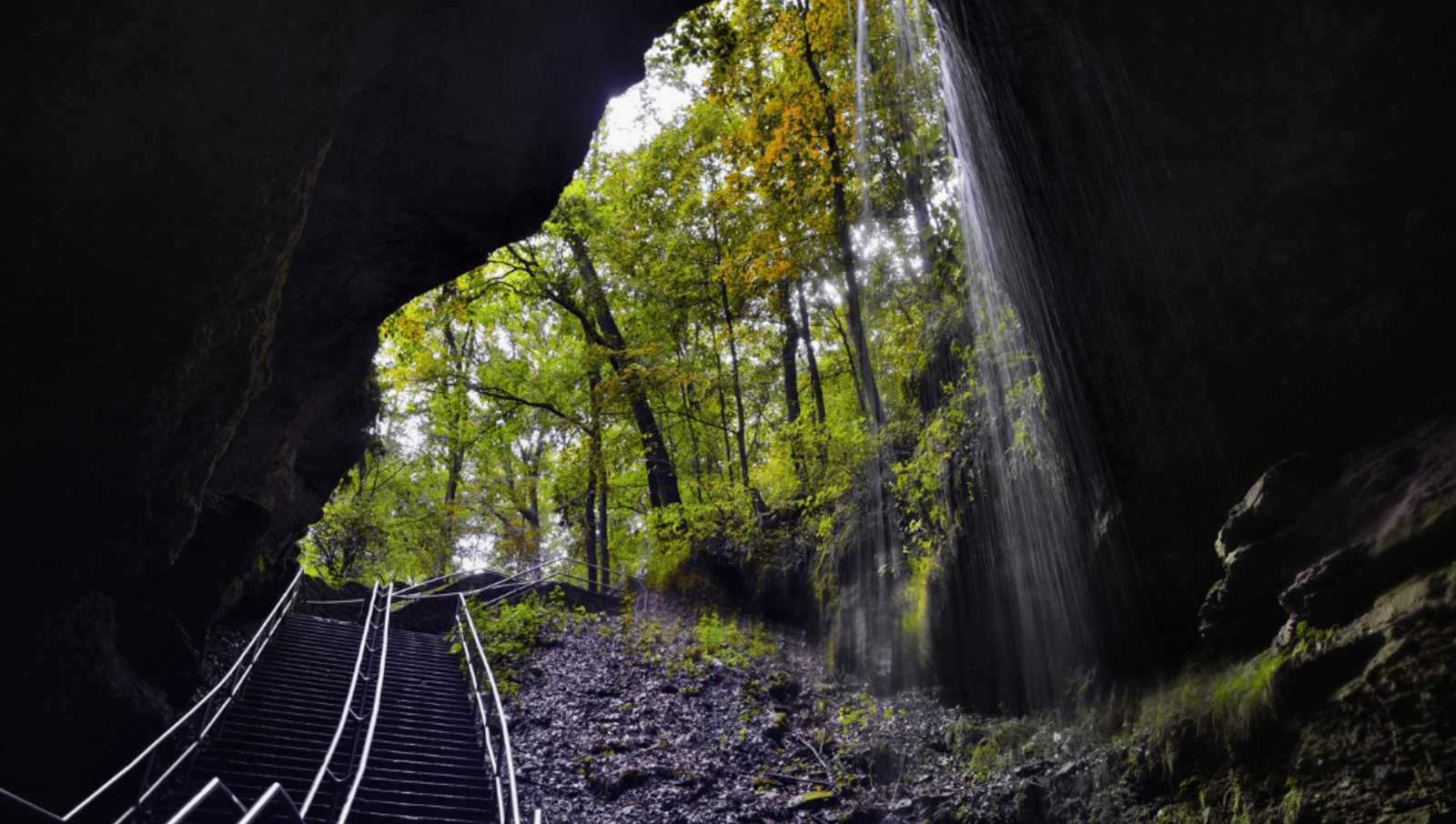


Here are some of the things you can do at Mammoth Cave:
-
Take a guided tour: There are a variety of guided tours available. These tours can help you learn more about the cave and its history.
-
Go spelunking: Spelunking is a great way to explore Mammoth Cave in a more adventurous way. There are a variety of spelunking tours available for experienced cavers.
-
Head to the visitor centre: for exhibits on the history and geology of the cave.
-
Hike in the park: There are a variety of hiking trails in Mammoth Cave National Park. These trails offer stunning views of the cave and the surrounding countryside.
Mount Emei, China
Mount Emei is a UNESCO World Heritage Site located in Sichuan Province, China. It is one of the four sacred Buddhist mountains in China and is home to several temples, monasteries, and other Buddhist sites. The most striking feature is the Leshan Giant Buddha, a 233-foot-tall statue carved out of a cliff face. The Buddha is situated at the confluence of three rivers, and its location makes it a truly awe-inspiring sight.
It is also a popular summer destination, thanks to its mild climate and stunning scenery. Visitors can hike to the mountain's top, enjoying panoramic views of the surrounding area. There are also many other activities to enjoy on Mount Emei, including visiting temples, taking boat rides on the rivers, and hiking through the forests.
If you are interested in Buddhist culture and history then Mount Emei is a must-visit destination. It is an exciting UNESCO world heritage site that offers something for everyone.



Here are some additional reasons why Mount Emei is an exciting UNESCO world heritage site to visit:
-
The mountain is home to a wide variety of plant and animal life, including some rare and endangered species.
-
It's a popular destination for hiking, rock climbing, and other outdoor activities.
-
It's home to several traditional villages and towns, which offer a glimpse into Chinese culture.
-
The mountain is located in a beautiful part of China, with stunning views of the surrounding countryside.
Amphitheatre of El Jem, Tunisia
The Amphitheater of El Jem is a UNESCO World Heritage Site and one of the most popular tourist attractions in Tunisia. It is the largest amphitheatre in North Africa and the third largest in the Roman world, after the Colosseum in Rome and the Amphitheatre in Capua. The amphitheatre was built in the 3rd century AD and could hold up to 35,000 spectators. It is a magnificent example of Roman architecture and engineering, and it is still in remarkably good condition.
The amphitheatre was used for gladiatorial contests, animal hunts, and other public spectacles. It is a powerful reminder of the power and influence of the Roman Empire, and it provides a fascinating glimpse into the culture and history of Roman Africa.
If you are interested in Roman history and architecture, the Amphitheater of El Jem is a must-see destination. It is an impressive and evocative monument that will transport you back to the days of the Roman Empire.
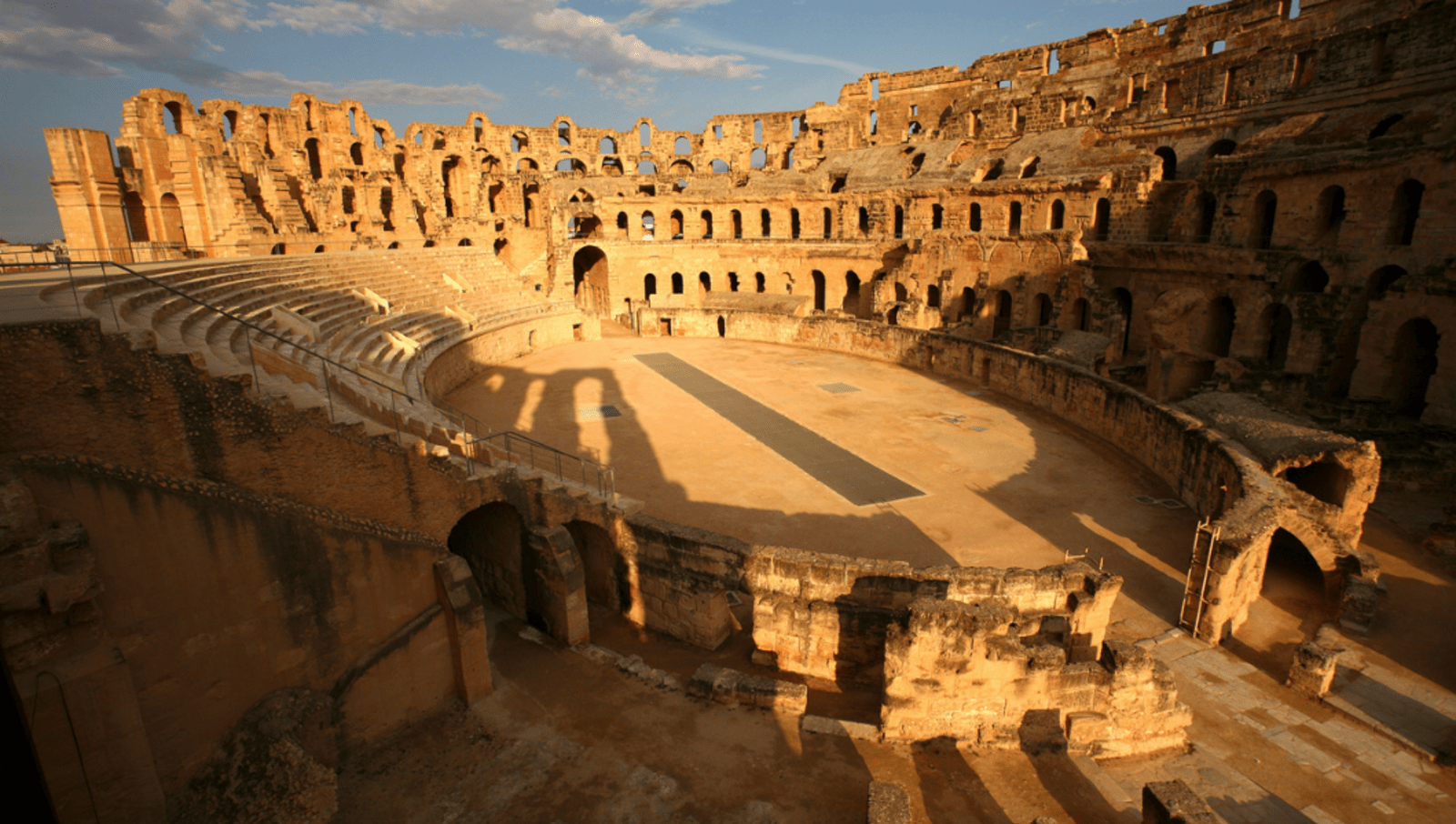


Here are some of the reasons why you should visit the Amphitheater of El Jem:
-
It is one of the best-preserved Roman amphitheatres in the world.
-
It is one of several mistakenly overlooked UNESCO World Heritage Sites that should be at the top of most travel bucket lists.
-
It is a fascinating glimpse into the culture and history of the Romans and their place in Africa.
If you are planning a trip to Tunisia, be sure to add the Amphitheater of El Jem to your itinerary. It is an unforgettable experience that you will never forget.
Nilgiri Mountain Railway Line, India
The Nilgiri Mountain Railway is a UNESCO World Heritage Site and a must-visit for any traveller to India. This 1,000 mm metre gauge railway was built by the British in 1908 and is the only rack railway in India. The railway relies on its fleet of steam locomotives, which makes for a truly unique and unforgettable experience.
The railway winds its way through the stunning Nilgiri Mountains, providing stunning views of the surrounding countryside. The journey is slow and leisurely, giving you plenty of time to soak up the scenery and take in the unique atmosphere of this special place.
In addition to its stunning scenery, the mountain railways is also a fascinating example of engineering and technology. The railway was built using a unique rack and pinion system that allows it to climb steep grades. This system was revolutionary at the time and is still in use today. This UNESCO site is a marvel of technology and a must-visit for any engineering enthusiast visit to India.
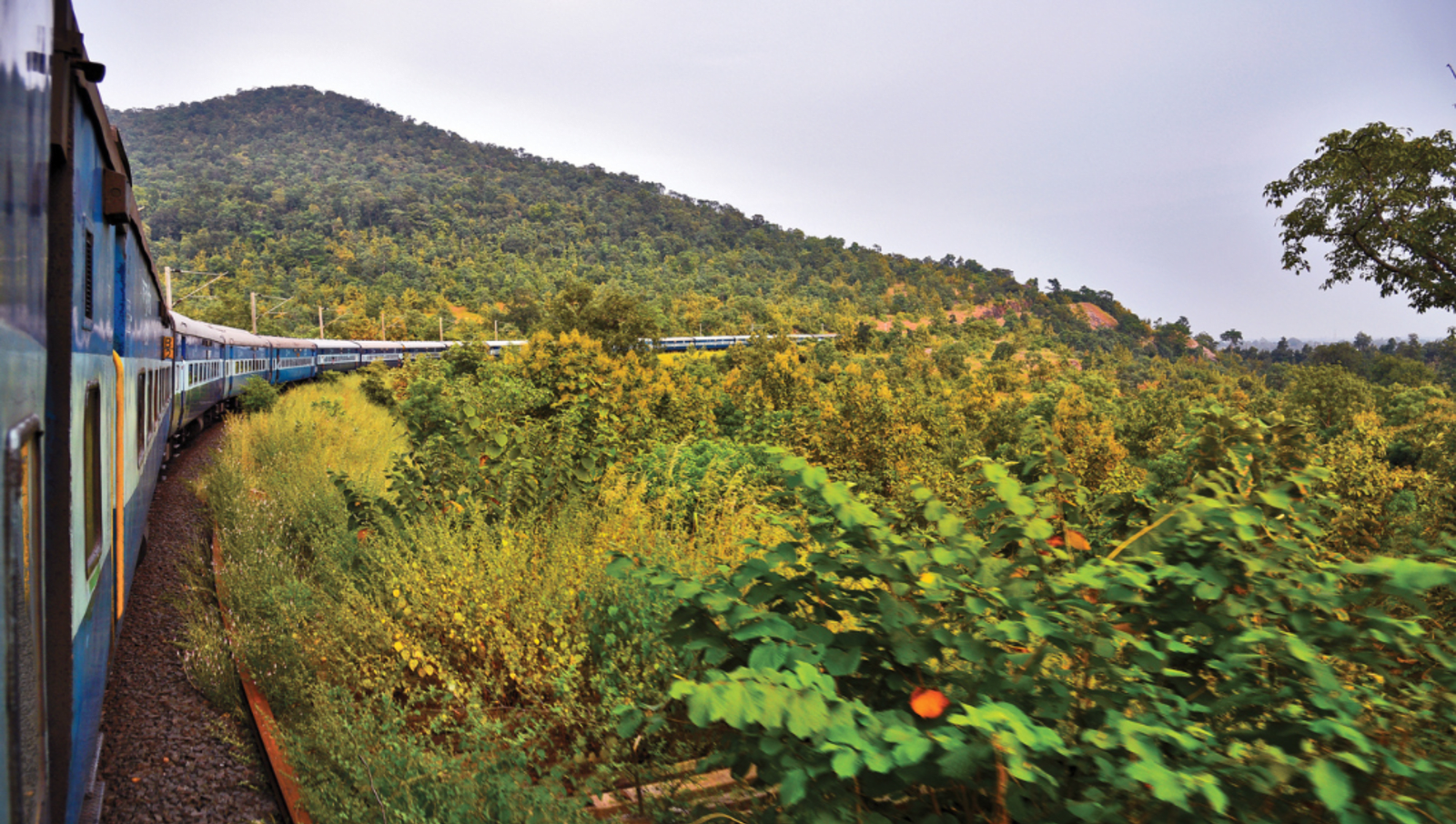


Volcanoes of Kamchatka, Russia
The Volcanoes of Kamchatka is a UNESCO World Heritage Site located in the Kamchatka Peninsula in Russia. It is one of the most exciting and unique places on Earth and is home to a wide variety of volcanic activity and incredible biodiversity.
The site includes six volcanoes, all of which are active. These volcanoes range in height from 1,500 to 3,500 metres and have erupted many times throughout history. The volcanoes are surrounded by glaciers, which create a stunning landscape of ice and fire.
In addition to its volcanic activity, the Volcanoes of Kamchatka are also home to a wide variety of wildlife. The site is home to the world's largest known variety of salmonoid fish, as well as sea otters, brown bears, and Stellar's sea eagles.



Lord Howe Island, Australia
A remarkable example of isolated oceanic islands, born of volcanic activity more than 2,000 m under the sea, the Lord Howe Island Group boast a spectacular topography and is home to numerous endemic species, especially birds. When most people think of Australian UNESCO sites they think of the Great Barrier Reef, Lord Howe however has to be the country's most underrated and important site.
This stunning archipelago located in the Tasman Sea is approximately 570 kilometres east of the coast of Port Macquarie, New South Wales, Australia. The islands are home to a diverse range of plant and animal life, including several endemic species, such as the flightless Lord Howe Woodhen and the world's largest stick insect, the Lord Howe Island Phasmid. The islands are known more so as a unique holiday destination for their spectacular scenery and for the extremely limited number of visitors able to visit at any one time.
The Lord Howe Island Group was inscribed on the UNESCO World Heritage List in 1982 in recognition of its outstanding natural beauty and its importance for biodiversity conservation. Popular activities on the only island of the archipelago with accommodation (Lord Howe) include hiking, swimming, snorkelling, diving and fishing.
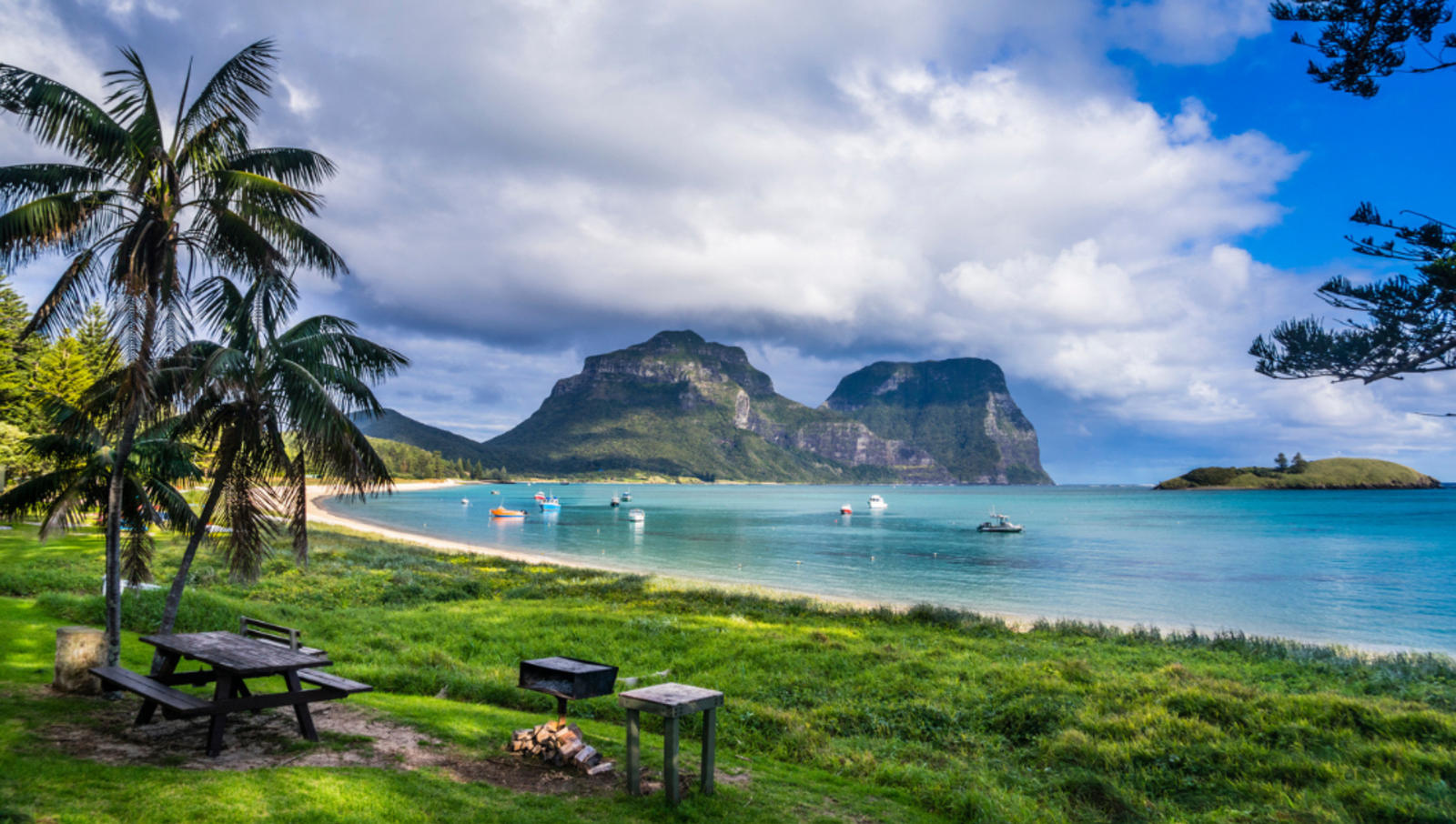


Here are some of the reasons why you should visit Lord Howe Island:
- Stunning scenery: The islands are home to a variety of spectacular scenery, including towering mountains, lush rainforests, and pristine beaches.
-
Diverse wildlife: The islands are home to a diverse range of plant and animal life, including several endemic species.
-
World-class recreation: The islands offer a variety of world-class recreation opportunities, including hiking, swimming, snorkelling coral reefs, diving, and fishing.
-
Unique culture: The islands have a unique culture and daily life that reflects their history as a British colony and their isolation from the mainland.
If you are looking for a place to experience stunning natural beauty, diverse wildlife, and world-class recreation, then the Lord Howe Island Group is the perfect destination for you.
Site quick links
Help & support
Flight Centre acknowledges the Traditional Custodians of Country throughout Australia.
© Flight Centre Travel Group Limited. ATIA Accreditation No. A10412.
*Travel restrictions & conditions apply. Review any specific conditions stated and our general terms at Terms and Conditions. Prices & taxes are correct as at the date of publication & are subject to availability and change without notice. Prices quoted are on sale until the dates specified unless otherwise stated or sold out prior. Prices are per person.

